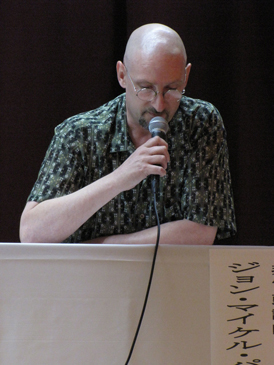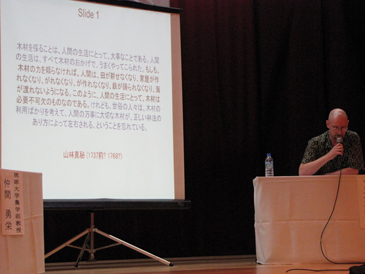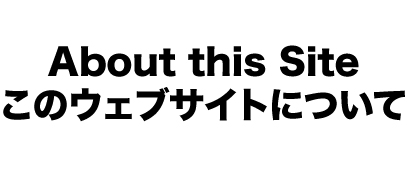Establishment and Objectives
The Ryukyu-Okinawa History and Culture Website came into existence in October 2008 as a restructuring of the Contemporary Okinawa Website that was first established in 1995 as an educational, public resource for information on Ryukyu and Okinawa in English.
Given that I was then researching the economic, political, and social history of postwar Okinawa, and because there was a distinct lack of such information available to the reader in English, I thought a devoted website might fill the void. I believed then, as I still do, that the World Wide Web would become a powerful research tool to complement the physical libraries and other centres of information we use and love, but with far greater accessibility.
On 19th August 2010, I created a current affairs adjunct Facebook page to this site. As of 24th February 2019 the Facebook page is 'liked' by 2431 people and followed by 2456 people.
Disclaimer and Copyright
All opinions expressed within the Ryukyu-Okinawa History and Culture Website (the foot of each constituent page is marked with the site name and my e-mail address) unless otherwise indicated, are my own.
Responsibility for inaccuracies and/or deficiencies here rests entirely with me. In the case of 'otherwise indicated,' when information is derived from another source (normally where I have translated information from Japanese resources or relied on information from other English resources) that source will be clearly displayed in brackets or endnoted/footnoted below the text. I am as careful as I can possibly be about crediting the original sources of information. You, the reader, should let me know if you think this is not the case.
Clearly, I take no responsibility whatsoever for the contents of external websites or resources linked to from this site. At the time I provided a link the information presented was useful or interesting. External sites can, of course, change the content and this is out of my control. I try to review links as far as possible but am only human (and rather lazy at times).
Your comments on this site are very much appreciated. My e-mail and postal addresses are listed below.
Unless of my own creation, the original source of photographs and other images will be clearly indicated. It is not my intent to infringe upon any copyright laws. The sole exception to this rule can be found on my contents page, and this is for purely stylistic reasons. Nine of the images on this page are scans of parts of Shin Okinawa Bungaku (新沖縄文学) covers from the 1960's through to 1980's. This journal (originally published by the Okinawa Times Company) has long since been defunct. Copyright issues in case of original text documents will unlikely arise since most are in the public domain. If you have a problem with me presenting more recent documents please let me know and we can sort it out.
Permission is happily granted for individual and classroom use and reproduction of original materials on the Contemporary Okinawa Website on condition that the author's intellectual property rights to these original materials are respected. In short, you don't have the right to copy and paste or repackage the original contents of this website. In the case that quotes from original sections are intended for publication, the written permission of the author must be obtained. In this regard, e-mail is acceptable and perhaps most convenient. A copy of the published article should also be sent on to me (see postal address below). In terms of organizing footnotes and bibliographical references for this online resource, please follow what stylistic conventions exist in your area of origin.


Personal Background
I was born in the city of Plymouth, Southwest England (UK) in 1961. On leaving school in 1977 at the age of 16, I embarked on and completed a two-year City and Guilds course in Hotel and Catering at the Plymouth College of Further Education (CFE). This was followed by a couple of years as a silver/gueridon service waiter for hire. In 1980, I joined Virgin Records (Retail Ltd.), rising to the position of Assistant Manager of the Plymouth Branch. During this time I became interested in the sword-drawing art of Iaidou. I quit my job at Virgin Records in late-1987 to take a trip to Japan, in large part to investigate this art further.
Although the trip did not quite work out as planned, it did stimulate an interest in Japan. On returning to England in early-1988, I determined to follow in a friend’s footsteps (a kanji nutcase and still, today, a guy that specializes in Japanese law and translates Japanese novels for fun) and undertake Japanese language studies at undergraduate level. As a mature student without the necessary qualifications to jump straight into university (I could have done better at school! "John seems to have gone off the boil," one of my history teachers once wrote about me in a school report), I took ‘A’ (advanced) Levels in Government and Politics and in Film Studies at Plymouth CFE. To financially support myself in this endeavour (and hopefully what would follow) I got a job as a domestic assistant at a local psychiatric hospital.
Things panned out as hoped for, and a somewhat unlikely (to me, at least) career in education unfolded. I obtained a B.A. in Modern History and Japanese Studies from the University of Sheffield, northern England, in 1993. Sometime in early-1992, I encountered the name “Okinawa” for the first time. So hooked did I become that I directed my final dissertation towards Okinawa and the three large powers it was in alignment with or subject to throughout its history. At the Department of History I was lucky enough to be able to study under Dr. Gordon Daniels, a scholar of Japan and, particularly in terms of my research interests, WWII and the postwar US occupation. I have not since encountered any academic who kept his office in such a state of book and journal article chaos but who could recount minute details from documents faster than Deep Blue.
Later in 1993, I was accepted into an M.A. program in International Relations at the International University of Japan, Niigata Prefecture, graduating in 1995. Here, I was able to study Japanese history with Chushichi Tsuzuki and Japan-US relations and Japan’s diplomatic history and foreign relations with the late Chihiro Hosoya. My supervisor was Yasushi Kosugi, a specialist in Islamic and middle eastern studies. Here, I also took a class in theories of international relations with one of Okinawa and Japan's most prominent scholars of political science, Seigen Miyazato. Taking this class swiftly led me to understand that theories of international relations and me don't play well together. Also at IUJ I met island economy specialist Hiroshi Kakazu. His insight into the Okinawan economy would profoundly influence my discipline shift after graduating from IUJ. My final IUJ thesis, titled Island of Military Bases: A Contemporary Political History of Okinawa, was submitted on 15th May 1995. Those familiar with the flow of Okinawa's history will note the significance. Shortly thereafter, I created the Contemporary Okinawa Website, uploading most of my M.A. thesis as its core text.
After six months as a kenkyusei (research student), I was accepted into a Ph.D. program at the Graduate School of International Development (GSID), the University of Nagoya, in April 1996, continuing my research into Okinawa but from a different perspective. My doctoral dissertation, entitled Managing a Wild Horse with a Rotten Rope: A Socioeconomic History of Kin Town and Okinawa was submitted to the GSID on 31st January 2002, and I was awarded my doctorate on 6th March 2002.
My research interests in the years since 2002 have moved away from postwar and contemporary themes almost exclusively back into all of the earlier periods in Okinawa's history. Although base-related issues chop and change and veer in and out of the headlines I figured that I had devoted enough time and effort to the subject. Life, I still feel, is too short for me to devote my research to just one time period when there are so many others of interest. Becoming a jack of all trades rather than a master of any one in particular is consistent with the way my brain works.
I also got the chance to teach Ryukyu-Okinawan history at the Ryugakusei Center (International Student Center), the University of the Ryukyus, in 2006, I think (the now-retired Professor Tsuneo Oshiro was instrumental in getting me this opportunity), and needed to devote considerable research to develop an all-embracing history course. From April 2008, along with the Ryukyu-Okinawa History and Culture of Okinawa course that I taught at the Ryudai Ryugakusei Center was added a Part II course there and a history course offered through the Tourism Department. A Part II course is also now offered at the Tourism Department. There was talk of a Part III history course coming into being in 2011 but the Tourism Department budget would not stretch at that point. It finally came about in October 2012. I would think I must be one of the few people currently residing on the planet earth who teaches three 15-week (each class 90-minutes in length) courses in Ryukyu-Okinawan history covering the full gamut through from ancient to contemporary.
Because of parental illness I (we) returned to the UK in April 2015. I'm currently working as a teaching assistant within special educational needs in secondary schools. No Okinawa-related jobs here in the UK, unfortunately.
Geek Corner
This website was designed and maintained on my mega beautiful 27" late-2011 iMac running Mac OS 10.12. until it stopped working. I picked up a late-2014 Mac mini 2.6 ghz Intel Core i5 to cope with the loss until more money became available for a serious desktop upgrade and must say that it is still a nice workhorse now that I upgraded to SSD. I also have an awesome late-2012 model 13" Macbook Air running the same OS. For webpage creation and site management Adobe's Dreamweaver CC is now solidly my weapon of choice. Never liked it much in comparison with GoLive but am now hooked and amazed at its power. For web-bound photo editing and compression, Adobe Photoshop CC is indispensable. For the graphics and logos throughout this site Adobe Illustrator CC is the business. For OCR (Optical Character Recognition), Omnipage was a great piece of software for English text and Yonde Koko reliable for Japanese, but neither piece of software has been effectively upgraded for Mac OSX on Intel processors. For extracting Japanese text from PDF files I have found OCRTOOLS from the Mac App Store to be very effective. Thank you, and goodnight.

|


